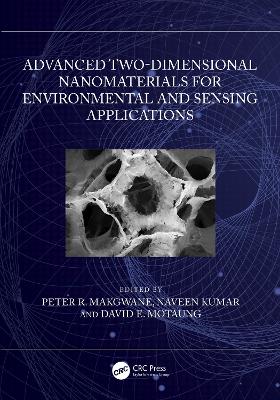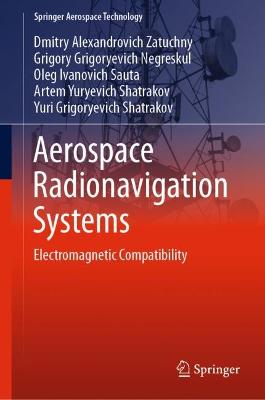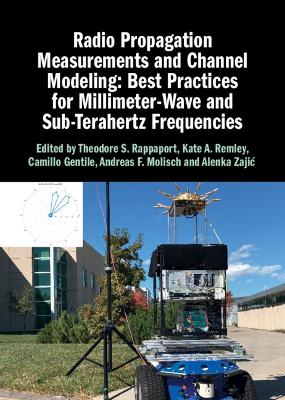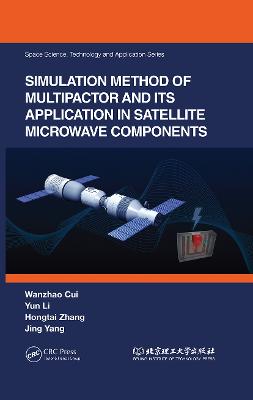RF/Microwave Engineering and Applications in Energy Systems
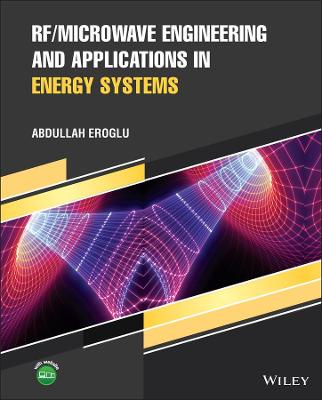 -15%
portes grátis
-15%
portes grátis
RF/Microwave Engineering and Applications in Energy Systems
Eroglu, Abdullah
John Wiley & Sons Inc
04/2022
640
Dura
Inglês
9781119268796
15 a 20 dias
1680
Biography xv
Acknowledgments xvii
About the Companion Website xix
1 Fundamentals of Electromagnetics 1
1.1 Introduction 1
1.2 Line, Surface, and Volume Integrals 1
1.2.1 Vector Analysis 1
1.2.1.1 Unit Vector Relationship 1
1.2.1.2 Vector Operations and Properties 2
1.2.2 Coordinate Systems 4
1.2.2.1 Cartesian Coordinate System 4
1.2.2.2 Cylindrical Coordinate System 5
1.2.2.3 Spherical Coordinate System 6
1.2.3 Differential Length (dl), Differential Area (ds), and Differential Volume (dv) 8
1.2.3.1 dl, ds, and dv in a Cartesian Coordinate System 8
1.2.3.2 dl, ds, and dv in a Cylindrical Coordinate System 8
1.2.3.3 dl, ds, and dv in a Spherical Coordinate System 9
1.2.4 Line Integral 10
1.2.5 Surface Integral 12
1.2.6 Volume Integral 12
1.3 Vector Operators and Theorems 13
1.3.1 Del Operator 13
1.3.2 Gradient 13
1.3.3 Divergence 15
1.3.4 Curl 16
1.3.5 Divergence Theorem 16
1.3.6 Stokes' Theorem 19
1.4 Maxwell's Equations 21
1.4.1 Differential Forms of Maxwell's Equations 21
1.4.2 Integral Forms of Maxwell's Equations 22
1.5 Time Harmonic Fields 23
References 25
Problems 25
2 Passive and Active Components 27
2.1 Introduction 27
2.2 Resistors 27
2.3 Capacitors 29
2.4 Inductors 32
2.4.1 Air Core Inductor Design 34
2.4.2 Magnetic Core Inductor Design 36
2.4.3 Planar Inductor Design 37
2.4.4 Transformers 38
2.5 Semiconductor Materials and Active Devices 39
2.5.1 Si 40
2.5.2 Wide-Bandgap Devices 40
2.5.2.1 GaAs 41
2.5.2.2 GaN 41
2.5.3 Active Devices 41
2.5.3.1 BJT and HBTs 41
2.5.3.2 FETs 43
2.5.3.3 MOSFETs 44
2.5.3.4 LDMOS 53
2.5.3.5 High Electron Mobility Transistor (HEMT) 54
2.6 Engineering Application Examples 55
References 62
Problems 63
3 Transmission Lines 71
3.1 Introduction 71
3.2 Transmission Line Analysis 71
3.2.1 Limiting Cases for Transmission Lines 75
3.2.2 Transmission Line Parameters 76
3.2.2.1 Coaxial Line 76
3.2.2.2 Two-wire Transmission Line 80
3.2.2.3 Parallel Plate Transmission Line 80
3.2.3 Terminated Lossless Transmission Lines 81
3.2.4 Special Cases of Terminated Transmission Lines 85
3.2.4.1 Short-circuited Line 85
3.2.4.2 Open-circuited Line 85
3.3 Smith Chart 86
3.3.1 Input Impedance Determination with a Smith Chart 91
3.3.2 Smith Chart as an Admittance Chart 95
3.3.3 ZY Smith Chart and Its Applications 95
3.4 Microstrip Lines 97
3.5 Striplines 104
3.6 Engineering Application Examples 107
References 109
Problems 109
4 Network Parameters 113
4.1 Introduction 113
4.2 Impedance Parameters - Z Parameters 113
4.3 Y Admittance Parameters 116
4.4 ABCD Parameters 117
4.5 h Hybrid Parameters 117
4.6 Network Connections 123
4.7 MATLAB Implementation of Network Parameters 129
4.8 S-Scattering Parameters 141
4.8.1 One-port Network 141
4.8.2 N-port Network 143
4.8.3 Normalized Scattering Parameters 146
4.9 Measurement of S Parameters 154
4.9.1 Measurement of S Parameters for Two-port Network 154
4.9.2 Measurement of S Parameters for a Three-port Network 156
4.10 Chain Scattering Parameters 158
4.11 Engineering Application Examples 160
References 176
Problems 176
5 Impedance Matching 181
5.1 Introduction 181
5.2 Impedance Matching Network with Lumped Elements 181
5.3 Impedance Matching with a Smith Chart - Graphical Method 184
5.4 Impedance Matching Network with Transmission Lines 187
5.4.1 Quarter-wave Transformers 187
5.4.2 Single Stub Tuning 188
5.4.2.1 Shunt Single Stub Tuning 188
5.4.2.2 Series Single Stub Tuning 189
5.4.3 Double Stub Tuning 190
5.5 Impedance Transformation and Matching between Source and Load Impedances 193
5.6 Bandwidth of Matching Networks 195
5.7 Engineering Application Examples 197
References 219
Problems 220
6 Resonator Circuits 223
6.1 Introduction 223
6.2 Parallel and Series Resonant Networks 223
6.2.1 Parallel Resonance 223
6.2.2 Series Resonance 229
6.3 Practical Resonances with Loss, Loading, and Coupling Effects 232
6.3.1 Component Resonances 232
6.3.2 Parallel LC Networks 235
6.3.2.1 Parallel LC Networks with Ideal Components 235
6.3.2.2 Parallel LC Networks with Nonideal Components 236
6.3.2.3 Loading Effects on Parallel LC Networks 237
6.3.2.4 LC Network Transformations 240
6.3.2.5 LC Network with Series Loss 244
6.4 Coupling of Resonators 245
6.5 LC Resonators as Impedance Transformers 249
6.5.1 Inductive Load 249
6.5.2 Capacitive Load 250
6.6 Tapped Resonators as Impedance Transformers 252
6.6.1 Tapped-C Impedance Transformer 252
6.6.2 Tapped-L Impedance Transformer 256
6.7 Engineering Application Examples 256
References 265
Problems 265
7 Couplers, Combiners, and Dividers 271
7.1 Introduction 271
7.2 Directional Couplers 271
7.2.1 Microstrip Directional Couplers 272
7.2.1.1 Two-line Microstrip Directional Couplers 272
7.2.1.2 Three-line Microstrip Directional Couplers 276
7.2.2 Multilayer and Multiline Planar Directional Couplers 279
7.2.3 Transformer Coupled Directional Couplers 281
7.2.3.1 Four-port Directional Coupler Design and Implementation 282
7.2.3.2 Six-port Directional Coupler Design 284
7.3 Multistate Reflectometers 289
7.3.1 Multistate Reflectometer Based on Four-port Network and Variable Attenuator 289
7.4 Combiners and Dividers 292
7.4.1 Analysis of Combiners and Dividers 292
7.4.2 Analysis of Dividers with Different Source Impedance 300
7.4.3 Microstrip Implementation of Combiners/Dividers 313
7.5 Engineering Application Examples 318
References 347
Problems 348
8 Filters 351
8.1 Introduction 351
8.2 Filter Design Procedure 351
8.3 Filter Design by the Insertion Loss Method 360
8.3.1 Low Pass Filters 361
8.3.1.1 Binomial Filter Response 362
8.3.1.2 Chebyshev Filter Response 365
8.3.2 High Pass Filters 376
8.3.3 Bandpass Filters 378
8.3.4 Bandstop Filters 382
8.4 Stepped Impedance Low Pass Filters 383
8.5 Stepped Impedance Resonator Bandpass Filters 386
8.6 Edge/Parallel-coupled, Half-wavelength Resonator Bandpass Filters 388
8.7 End-Coupled, Capacitive Gap, Half-Wavelength Resonator Bandpass Filters 394
8.8 Tunable Tapped Combline Bandpass Filters 400
8.8.1 Network Parameter Representation of Tunable Tapped Filter 402
8.9 Dual Band Bandpass Filters using Composite Transmission Lines 405
8.10 Engineering Application Examples 406
References 422
Problems 422
9 Waveguides 425
9.1 Introduction 425
9.2 Rectangular Waveguides 425
9.2.1 Waveguide Design with Isotropic Media 426
9.2.1.1 TEmn Modes 427
9.2.2 Waveguide Design with Gyrotropic Media 429
9.2.2.1 TEm0 Modes 431
9.2.3 Waveguide Design with Anisotropic Media 432
9.3 Cylindrical Waveguides 442
9.3.1 TE Modes 442
9.3.2 TM Modes 444
9.4 Waveguide Phase Shifter Design 444
9.5 Engineering Application Examples 446
References 454
Problems 454
10 Power Amplifiers 457
10.1 Introduction 457
10.2 Amplifier Parameters 457
10.2.1 Gain 457
10.2.2 Efficiency 459
10.2.3 Power Output Capability 460
10.2.4 Linearity 460
10.2.5 1 dB Compression Point 461
10.2.6 Harmonic Distortion 462
10.2.7 Intermodulation 465
10.3 Small Signal Amplifier Design 470
10.3.1 DC Biasing Circuits 471
10.3.2 BJT Biasing Circuits 472
10.3.2.1 Fixed Bias 473
10.3.2.2 Stable Bias 474
10.3.2.3 Self-bias 475
10.3.2.4 Emitter Bias 476
10.3.2.5 Active Bias Circuit 477
10.3.2.6 Bias Circuit using Linear Regulator 477
10.3.3 FET Biasing Circuits 477
10.3.4 Small Signal Amplifier Design Method 478
10.3.4.1 Definitions Power Gains for Small Signal Amplifiers 478
10.3.4.2 Design Steps for Small Signal Amplifier 482
10.3.4.3 Small Signal Amplifier Stability 483
10.3.4.4 Constant Gain Circles 488
10.3.4.5 Unilateral Figure of Merit 493
10.4 Engineering Application Examples 494
References 508
Problems 509
11 Antennas 513
11.1 Introduction 513
11.2 Antenna Parameters 514
11.3 Wire Antennas 521
11.3.1 Infinitesimal (Hertzian) Dipole (l ? ?/50) 521
11.3.2 Short Dipole ( ?/50 ? l ? ?/10) 524
11.3.3 Half-wave Dipole (l = ?/2) 525
11.4 Microstrip Antennas 531
11.4.1 Type of Patch Antennas 533
11.4.2 Feeding Methods 533
11.4.2.1 Microstrip Line Feed 533
11.4.2.2 Proximity Coupling 536
11.4.3 Microstrip Antenna Analysis - Transmission Line Method 536
11.4.4 Impedance Matching 537
11.5 Engineering Application Examples 539
References 552
Problems 552
12 RF Wireless Communication Basics for Emerging Technologies 555
12.1 Introduction 555
12.2 Wireless Technology Basics 555
12.3 Standard Protocol vs Proprietary Protocol 556
12.3.1 Standard Protocols 556
12.3.2 Proprietary Protocols 556
12.3.2.1 Physical Layer Only Approach 557
12.4 Overview of Protocols 557
12.4.1 ZigBee 557
12.4.2 LowPAN 558
12.4.3 Wi-Fi 558
12.4.4 Bluetooth 560
12.5 RFIDs 560
12.5.1 Active RFID Tags 562
12.5.2 Passive RFID Tags 562
12.5.3 RFID Frequencies 562
12.5.3.1 Low Frequency ~124 kHz and High Frequency ~13.56 MHz 562
12.5.3.2 Ultrahigh Frequency (UHF) Tags ~423 MHz-2.45 GHz 563
12.6 RF Technology for Implantable Medical Devices 563
12.6.1 Challenges with IMDs 564
12.6.1.1 Biocompatibility 564
12.6.1.2 Frequency 564
12.6.1.3 Dimension Constraints 564
12.7 Engineering Application Examples 565
References 576
13 Energy Harvesting and HVAC Systems with RF Signals 577
13.1 Introduction 577
13.2 RF Energy Harvesting 577
13.3 RF Energy Harvesting System Design for Dual Band Operation 578
13.3.1 Matching Network for Energy Harvester 580
13.3.2 RF-DC Conversion for Energy Harvester 582
13.3.3 Clamper and Peak Detector Circuits 582
13.3.4 Cascaded Rectifier 584
13.3.5 Villard Voltage Multiplier 584
13.3.6 RF-DC Rectifier Stages 584
13.4 Diode Threshold Vth Cancellation 585
13.4.1 Internal Vth Cancellation 585
13.4.2 External Vth Cancellation 586
13.4.3 Self-Vth Cancellation 586
13.5 HVAC Systems 587
13.6 Engineering Application Examples 588
References 609
Index 611
Biography xv
Acknowledgments xvii
About the Companion Website xix
1 Fundamentals of Electromagnetics 1
1.1 Introduction 1
1.2 Line, Surface, and Volume Integrals 1
1.2.1 Vector Analysis 1
1.2.1.1 Unit Vector Relationship 1
1.2.1.2 Vector Operations and Properties 2
1.2.2 Coordinate Systems 4
1.2.2.1 Cartesian Coordinate System 4
1.2.2.2 Cylindrical Coordinate System 5
1.2.2.3 Spherical Coordinate System 6
1.2.3 Differential Length (dl), Differential Area (ds), and Differential Volume (dv) 8
1.2.3.1 dl, ds, and dv in a Cartesian Coordinate System 8
1.2.3.2 dl, ds, and dv in a Cylindrical Coordinate System 8
1.2.3.3 dl, ds, and dv in a Spherical Coordinate System 9
1.2.4 Line Integral 10
1.2.5 Surface Integral 12
1.2.6 Volume Integral 12
1.3 Vector Operators and Theorems 13
1.3.1 Del Operator 13
1.3.2 Gradient 13
1.3.3 Divergence 15
1.3.4 Curl 16
1.3.5 Divergence Theorem 16
1.3.6 Stokes' Theorem 19
1.4 Maxwell's Equations 21
1.4.1 Differential Forms of Maxwell's Equations 21
1.4.2 Integral Forms of Maxwell's Equations 22
1.5 Time Harmonic Fields 23
References 25
Problems 25
2 Passive and Active Components 27
2.1 Introduction 27
2.2 Resistors 27
2.3 Capacitors 29
2.4 Inductors 32
2.4.1 Air Core Inductor Design 34
2.4.2 Magnetic Core Inductor Design 36
2.4.3 Planar Inductor Design 37
2.4.4 Transformers 38
2.5 Semiconductor Materials and Active Devices 39
2.5.1 Si 40
2.5.2 Wide-Bandgap Devices 40
2.5.2.1 GaAs 41
2.5.2.2 GaN 41
2.5.3 Active Devices 41
2.5.3.1 BJT and HBTs 41
2.5.3.2 FETs 43
2.5.3.3 MOSFETs 44
2.5.3.4 LDMOS 53
2.5.3.5 High Electron Mobility Transistor (HEMT) 54
2.6 Engineering Application Examples 55
References 62
Problems 63
3 Transmission Lines 71
3.1 Introduction 71
3.2 Transmission Line Analysis 71
3.2.1 Limiting Cases for Transmission Lines 75
3.2.2 Transmission Line Parameters 76
3.2.2.1 Coaxial Line 76
3.2.2.2 Two-wire Transmission Line 80
3.2.2.3 Parallel Plate Transmission Line 80
3.2.3 Terminated Lossless Transmission Lines 81
3.2.4 Special Cases of Terminated Transmission Lines 85
3.2.4.1 Short-circuited Line 85
3.2.4.2 Open-circuited Line 85
3.3 Smith Chart 86
3.3.1 Input Impedance Determination with a Smith Chart 91
3.3.2 Smith Chart as an Admittance Chart 95
3.3.3 ZY Smith Chart and Its Applications 95
3.4 Microstrip Lines 97
3.5 Striplines 104
3.6 Engineering Application Examples 107
References 109
Problems 109
4 Network Parameters 113
4.1 Introduction 113
4.2 Impedance Parameters - Z Parameters 113
4.3 Y Admittance Parameters 116
4.4 ABCD Parameters 117
4.5 h Hybrid Parameters 117
4.6 Network Connections 123
4.7 MATLAB Implementation of Network Parameters 129
4.8 S-Scattering Parameters 141
4.8.1 One-port Network 141
4.8.2 N-port Network 143
4.8.3 Normalized Scattering Parameters 146
4.9 Measurement of S Parameters 154
4.9.1 Measurement of S Parameters for Two-port Network 154
4.9.2 Measurement of S Parameters for a Three-port Network 156
4.10 Chain Scattering Parameters 158
4.11 Engineering Application Examples 160
References 176
Problems 176
5 Impedance Matching 181
5.1 Introduction 181
5.2 Impedance Matching Network with Lumped Elements 181
5.3 Impedance Matching with a Smith Chart - Graphical Method 184
5.4 Impedance Matching Network with Transmission Lines 187
5.4.1 Quarter-wave Transformers 187
5.4.2 Single Stub Tuning 188
5.4.2.1 Shunt Single Stub Tuning 188
5.4.2.2 Series Single Stub Tuning 189
5.4.3 Double Stub Tuning 190
5.5 Impedance Transformation and Matching between Source and Load Impedances 193
5.6 Bandwidth of Matching Networks 195
5.7 Engineering Application Examples 197
References 219
Problems 220
6 Resonator Circuits 223
6.1 Introduction 223
6.2 Parallel and Series Resonant Networks 223
6.2.1 Parallel Resonance 223
6.2.2 Series Resonance 229
6.3 Practical Resonances with Loss, Loading, and Coupling Effects 232
6.3.1 Component Resonances 232
6.3.2 Parallel LC Networks 235
6.3.2.1 Parallel LC Networks with Ideal Components 235
6.3.2.2 Parallel LC Networks with Nonideal Components 236
6.3.2.3 Loading Effects on Parallel LC Networks 237
6.3.2.4 LC Network Transformations 240
6.3.2.5 LC Network with Series Loss 244
6.4 Coupling of Resonators 245
6.5 LC Resonators as Impedance Transformers 249
6.5.1 Inductive Load 249
6.5.2 Capacitive Load 250
6.6 Tapped Resonators as Impedance Transformers 252
6.6.1 Tapped-C Impedance Transformer 252
6.6.2 Tapped-L Impedance Transformer 256
6.7 Engineering Application Examples 256
References 265
Problems 265
7 Couplers, Combiners, and Dividers 271
7.1 Introduction 271
7.2 Directional Couplers 271
7.2.1 Microstrip Directional Couplers 272
7.2.1.1 Two-line Microstrip Directional Couplers 272
7.2.1.2 Three-line Microstrip Directional Couplers 276
7.2.2 Multilayer and Multiline Planar Directional Couplers 279
7.2.3 Transformer Coupled Directional Couplers 281
7.2.3.1 Four-port Directional Coupler Design and Implementation 282
7.2.3.2 Six-port Directional Coupler Design 284
7.3 Multistate Reflectometers 289
7.3.1 Multistate Reflectometer Based on Four-port Network and Variable Attenuator 289
7.4 Combiners and Dividers 292
7.4.1 Analysis of Combiners and Dividers 292
7.4.2 Analysis of Dividers with Different Source Impedance 300
7.4.3 Microstrip Implementation of Combiners/Dividers 313
7.5 Engineering Application Examples 318
References 347
Problems 348
8 Filters 351
8.1 Introduction 351
8.2 Filter Design Procedure 351
8.3 Filter Design by the Insertion Loss Method 360
8.3.1 Low Pass Filters 361
8.3.1.1 Binomial Filter Response 362
8.3.1.2 Chebyshev Filter Response 365
8.3.2 High Pass Filters 376
8.3.3 Bandpass Filters 378
8.3.4 Bandstop Filters 382
8.4 Stepped Impedance Low Pass Filters 383
8.5 Stepped Impedance Resonator Bandpass Filters 386
8.6 Edge/Parallel-coupled, Half-wavelength Resonator Bandpass Filters 388
8.7 End-Coupled, Capacitive Gap, Half-Wavelength Resonator Bandpass Filters 394
8.8 Tunable Tapped Combline Bandpass Filters 400
8.8.1 Network Parameter Representation of Tunable Tapped Filter 402
8.9 Dual Band Bandpass Filters using Composite Transmission Lines 405
8.10 Engineering Application Examples 406
References 422
Problems 422
9 Waveguides 425
9.1 Introduction 425
9.2 Rectangular Waveguides 425
9.2.1 Waveguide Design with Isotropic Media 426
9.2.1.1 TEmn Modes 427
9.2.2 Waveguide Design with Gyrotropic Media 429
9.2.2.1 TEm0 Modes 431
9.2.3 Waveguide Design with Anisotropic Media 432
9.3 Cylindrical Waveguides 442
9.3.1 TE Modes 442
9.3.2 TM Modes 444
9.4 Waveguide Phase Shifter Design 444
9.5 Engineering Application Examples 446
References 454
Problems 454
10 Power Amplifiers 457
10.1 Introduction 457
10.2 Amplifier Parameters 457
10.2.1 Gain 457
10.2.2 Efficiency 459
10.2.3 Power Output Capability 460
10.2.4 Linearity 460
10.2.5 1 dB Compression Point 461
10.2.6 Harmonic Distortion 462
10.2.7 Intermodulation 465
10.3 Small Signal Amplifier Design 470
10.3.1 DC Biasing Circuits 471
10.3.2 BJT Biasing Circuits 472
10.3.2.1 Fixed Bias 473
10.3.2.2 Stable Bias 474
10.3.2.3 Self-bias 475
10.3.2.4 Emitter Bias 476
10.3.2.5 Active Bias Circuit 477
10.3.2.6 Bias Circuit using Linear Regulator 477
10.3.3 FET Biasing Circuits 477
10.3.4 Small Signal Amplifier Design Method 478
10.3.4.1 Definitions Power Gains for Small Signal Amplifiers 478
10.3.4.2 Design Steps for Small Signal Amplifier 482
10.3.4.3 Small Signal Amplifier Stability 483
10.3.4.4 Constant Gain Circles 488
10.3.4.5 Unilateral Figure of Merit 493
10.4 Engineering Application Examples 494
References 508
Problems 509
11 Antennas 513
11.1 Introduction 513
11.2 Antenna Parameters 514
11.3 Wire Antennas 521
11.3.1 Infinitesimal (Hertzian) Dipole (l ? ?/50) 521
11.3.2 Short Dipole ( ?/50 ? l ? ?/10) 524
11.3.3 Half-wave Dipole (l = ?/2) 525
11.4 Microstrip Antennas 531
11.4.1 Type of Patch Antennas 533
11.4.2 Feeding Methods 533
11.4.2.1 Microstrip Line Feed 533
11.4.2.2 Proximity Coupling 536
11.4.3 Microstrip Antenna Analysis - Transmission Line Method 536
11.4.4 Impedance Matching 537
11.5 Engineering Application Examples 539
References 552
Problems 552
12 RF Wireless Communication Basics for Emerging Technologies 555
12.1 Introduction 555
12.2 Wireless Technology Basics 555
12.3 Standard Protocol vs Proprietary Protocol 556
12.3.1 Standard Protocols 556
12.3.2 Proprietary Protocols 556
12.3.2.1 Physical Layer Only Approach 557
12.4 Overview of Protocols 557
12.4.1 ZigBee 557
12.4.2 LowPAN 558
12.4.3 Wi-Fi 558
12.4.4 Bluetooth 560
12.5 RFIDs 560
12.5.1 Active RFID Tags 562
12.5.2 Passive RFID Tags 562
12.5.3 RFID Frequencies 562
12.5.3.1 Low Frequency ~124 kHz and High Frequency ~13.56 MHz 562
12.5.3.2 Ultrahigh Frequency (UHF) Tags ~423 MHz-2.45 GHz 563
12.6 RF Technology for Implantable Medical Devices 563
12.6.1 Challenges with IMDs 564
12.6.1.1 Biocompatibility 564
12.6.1.2 Frequency 564
12.6.1.3 Dimension Constraints 564
12.7 Engineering Application Examples 565
References 576
13 Energy Harvesting and HVAC Systems with RF Signals 577
13.1 Introduction 577
13.2 RF Energy Harvesting 577
13.3 RF Energy Harvesting System Design for Dual Band Operation 578
13.3.1 Matching Network for Energy Harvester 580
13.3.2 RF-DC Conversion for Energy Harvester 582
13.3.3 Clamper and Peak Detector Circuits 582
13.3.4 Cascaded Rectifier 584
13.3.5 Villard Voltage Multiplier 584
13.3.6 RF-DC Rectifier Stages 584
13.4 Diode Threshold Vth Cancellation 585
13.4.1 Internal Vth Cancellation 585
13.4.2 External Vth Cancellation 586
13.4.3 Self-Vth Cancellation 586
13.5 HVAC Systems 587
13.6 Engineering Application Examples 588
References 609
Index 611



